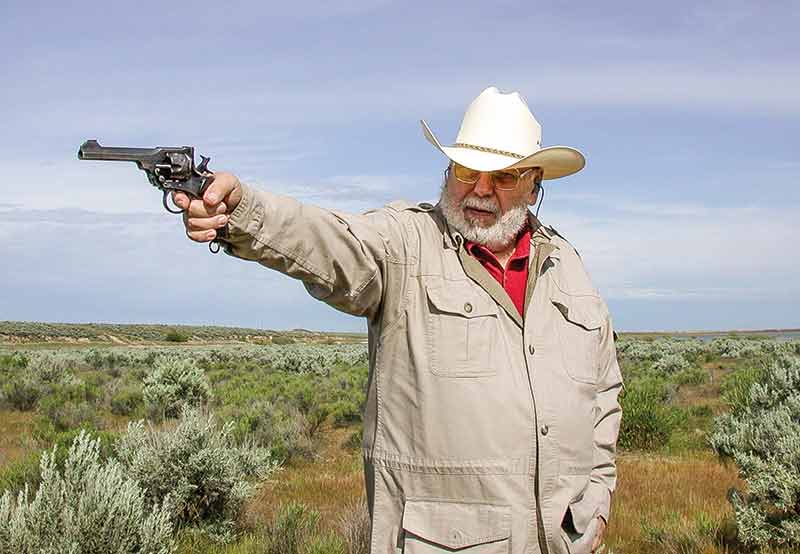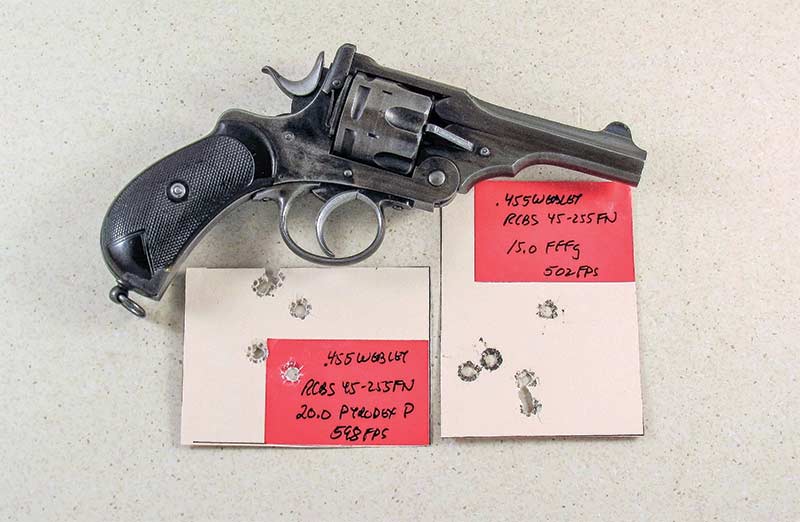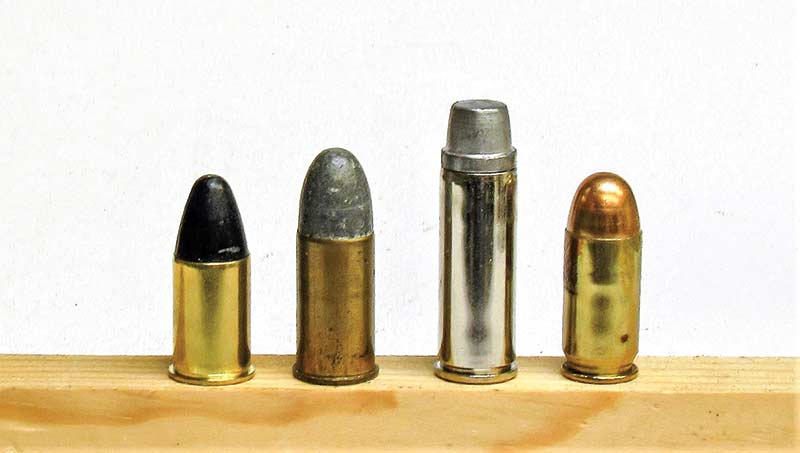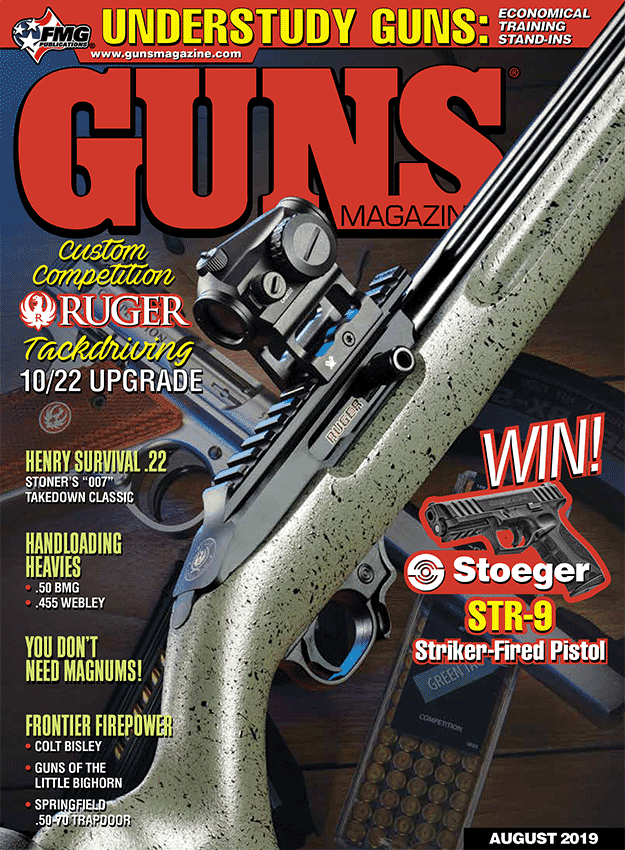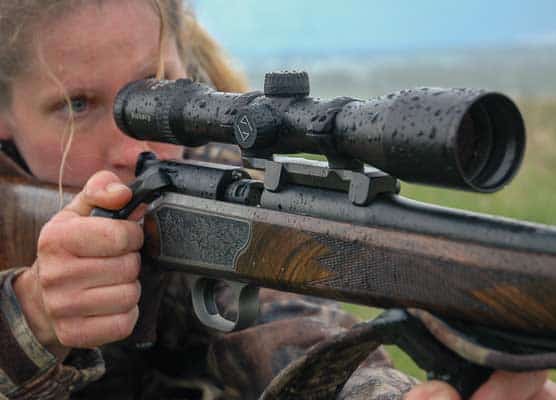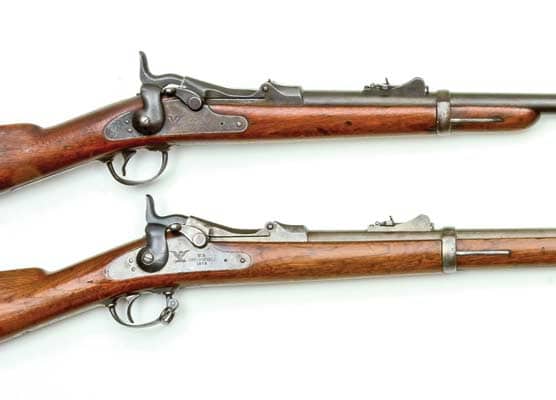The .455 Webley: Part 1
Britain’s Big-Bore Heavyweight, Part 1
America and Great Britain have been tied together in many ways. It did take two wars to convince the Brits we were going to be independent, but since then we’ve been strong allies — and both of us looked to .45 caliber sidearms soon after cartridge sixguns began to appear!
Double-Action Anglo Style
While our early history revolved around single-action percussion and cartridge revolvers, the double action mechanism for the British goes back to the 1850s. One of my first revolvers when I was a teenager was a double action Deane & Adams British revolver. Our cartridges of choice were the .45 Colt, .45 Schofield and .45 ACP while the British went with the .450 Boxer and the .455 Webley MKI and MKII. What we called “Top-Breaks,” the British called “Hinge-Frames.”
The original Webley MKI Service Revolver — although a .455 — was initially called a “.442” as this was the bore diameter, not the groove diameter. Eventually it became the .455 Webley and served the Brits in a long series of homely — though highly efficient — sixguns. None of the Webleys will win any prizes for looks but it should be noted their grip frames, especially on the MKI through MKV models, were much more comfortable than the early American DA revolvers.
Increasing Improvements
The MKI arrived in 1887 chambered in .455 Webley, with more than 35,000 produced by 1894. In 1894 the MKI became the MKII with the most noticeable changes being the hump at the top of the grip frame, a sturdier trigger guard and a wider hammer. Interior V-springs were replaced by coil-style. In 1897 the MKIII arrived with several internal improvements. This was followed two years later by the MKIV with more internal improvements as well as a lightened hammer spur and a rounding of the angles on the frame. In 1913 the MKV appeared with an increase in cylinder diameter and in 1915 the final model — the MKVI — arrived with a 6″ barrel and a grip frame with a more square profile. This was the basic British service revolver throughout WWI.
Big, Slow, Effective
The .455 Webley was originally a black powder cartridge with a case length of 0.85 to 0.87″ (the MKI). With the arrival of smokeless powders, the case length was reduced in 1897 to 0.74-0.76″ (MKII). However, all subsequent .455 Webleys were chambered for the longer original cartridge so either case length would work in any of them. The original .455 Webley round is the .455 MKI and Colt made this same round (with a different shaped bullet) as the .455 Colt.
From the MKI, which arrived in 1887 through all the minor changes to the MKVI of 1915, the Webley .455 served the Brits for 60-plus years. During this time the .476 Eley, .476 Enfield MKIII, .455 Colt, .455 Revolver MKI, .450 Revolver, .450 Short. .450 Adams, and .450 Colt were all cartridges that can be fired in the same .455 Webley.
Today the only manufacturer I know producing .455 Webley ammunition for sale in this country is Fiocchi. Their MKII loading is an LRN weighing 262 grains. Actually, the nose is much more pointed than it is round. In my Webleys it clocks out at 649 fps and groups five shots into less than 2″ at 20 yards.
Essential Components
For reloading the .455 Webley I use the RCBS 3-die set and all my brass comes from fired Fiocchi rounds. This brass is shorter in length than .45 ACP rounds and has a very thin rim, even less so than found on the .45 ACP. It also uses small — rather than large — pistol primers. Any bullet normally used in traditional .45 Colt loads as well as those used in loading the .45 Auto Rim can be used in the .455 Webley.
For bullets I go with the Lyman #454424, the original Keith design weighing around 255 grains. Unfortunately, this bullet is no longer available from Lyman but it can be found on the Internet and at gun shows. It has been replaced by #452424 and that certainly works just as well for most applications.
Also from Lyman I use another Keith design, the #452423 — a 225-gr. SWC design for use in the .45 Auto Rim; this is backed up by a virtually identical design from an old Hensley & Gibbs mold. From RCBS there’s the #45-255 FN based on the original flat-nosed conical bullet for the .45 Colt, however, this one has a crimping groove. Finally there’s the #45-270SAA bullet probably the best now available for use in the .45 Colt for standard loads. This one weighs right around 270-280 grains (depending on the alloy) and is actually an improvement on the original Keith design. All bullets are sized to 0.454″.
At a cartridge case length of approximately three-fourths of an inch there’s not a lot of case capacity to work with in loading for the .455 Webley. We also need to consider the fact the early guns go back to the 1890s so they need to be treated gently. With my MKI I go the black powder route with both Pyrodex P and FFFg and CTG Goex black powder with all loads measured by volume, not by weight.
For smokeless powders I look to Trail Boss, Unique and Red Dot. From my collection of older loading manuals I found a 60+-year-old Lyman Manual that had data for the .455 Webley/.455 Colt. Two of the four powders shown are long gone and those loads using Unique and Bulls-eye were for the longer case.
When using Unique with any of the above bullets in the older Webleys I do not go above 4.0 grains when the bullets are crimped in the crimping groove. I get the same results with 5.0 grains when the bullet is seated out. That is, instead of using the crimping groove the cartridge case mouth is crimped into the lubricating groove resulting in greater case capacity. I do use the 5.0 grains of Unique load with bullets crimped in the crimping groove in later revolvers such as the MKVI and Smith & Wesson versions. Smith & Wesson chambered their 1st Model Hand Ejector/Triple-Lock and also the 2nd Model Hand Ejector in .455 for the British military.
One thing we can say for certain with the .455 Webley revolvers is they are not target pistols by any means. They were meant for combat, not bulls-eye shooting — for their intended purpose they serve exceedingly well. My most accurate loads with the 4″ Webley MKI is the Lyman #452423 or H&G 225-grain .45 Auto Rim bullet over 4.0 grains of Unique for right around 600 fps and groups just over 1″. I also get good results with loads put together with black powder using the RCBS #45-255FN bullet. With 20.0 grains of Pyrodex P (Pistol), velocity is 667 fps while 15.0 grains of Goex FFFg is a very mild shooting 500 fps. Both loads group five shots in less than 2″ at 20 yards. With the same bullet seated out and crimped in the lube groove over 4.0 grains of Trail Boss, velocity is 550 fps with a group just under 3″ while 4.0 grains of Red Dot group a little tighter at 2″ with a more respectable muzzle velocity of 720 fps.
Switching to the MKIV .455 Webley, I found using the RCBS #45-255 FN bullet over 5.0 grains of Unique performed very well with 1-1/2″ groups and a muzzle velocity of 760 fps. The use of this later revolver allows a step up in muzzle velocity. Another load I feel much more comfortable using in this later Webley is the #454424KT over 5.0 grains of Unique which gives a muzzle velocity of 780 fps with groups just over 2″. Now we’re in the neighborhood of some serious loads!
The .455 Webley revolvers will never win any prizes for aesthetics. They were built for a task they fulfilled remarkably well. At a time when we had switched from the proven .45 Colt to the woefully inadequate .38 Long Colt, the British stayed with their .455. However, they too eventually went backwards going to the .38 Enfield in WWII. Today, I would not feel at any great disadvantage carrying one of these old .455 revolvers from a bygone age.
What would make sense today would be a reasonably priced Webley-style revolver in modern chamberings!
